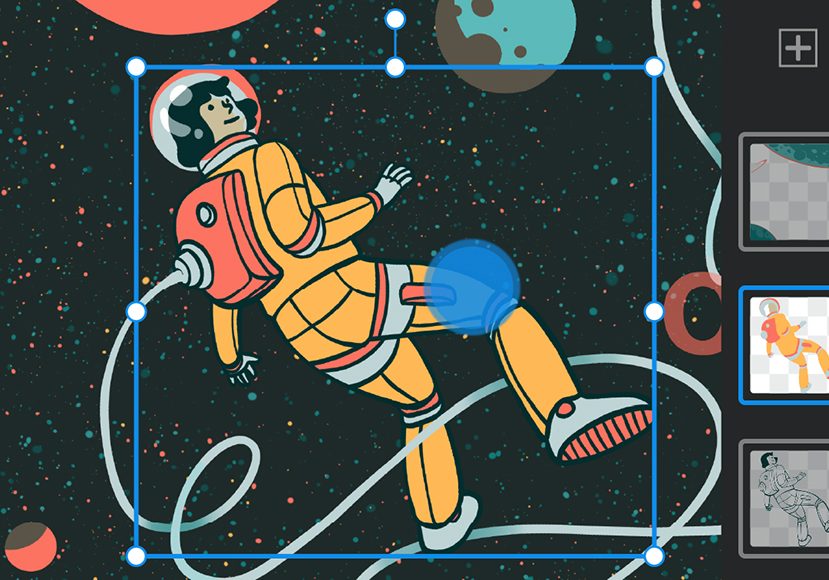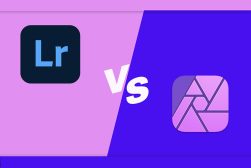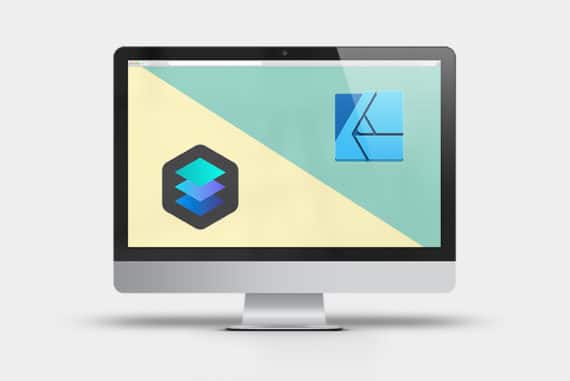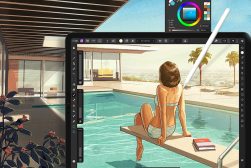
Affinity Photo vs Photoshop: What’s the Difference?
There's more than just pricing which separates these two popular image editors, so let's delve deeper into which one is right for your needs.
Photoshop | Software | By Jeff Collier
Photoshop has been at the top of the image editing game for quite a while now, and it’s no surprise why.
And while Photoshop does have alternatives, the most prominent competitor is Affinity Photo.
When you bring it down to the basics, Affinity Photo and Photoshop are essentially the same.
Unsurprisingly, this leads to some confusion among online design artists regarding which to opt for.
In this article, we’re going to cover all the basics about these popular image editing programs.
By the end, you’ll be able to differentiate between Affinity Photo and Photoshop and work out which one is more suitable for you and your editing work.
But before we do, we are going to start off with a little bit of history on how they came to be the software that they are today.
What are the Pros and Cons of Affinity Photo?
- Non-destructive RAW files editing
- Tone mapping and focus stacking
- Good selection of live filters
- Photoshop-style editing tools
- No subscription required
- Great value for money
- A steep learning curve for beginners
- Can be sluggish
- Lacks browsing and cataloging tools
- Not optimised for multiple images
- Lacks social media publishing
Affinity Photo is one of the newer digital editing software that has taken the industry by surprise.
It stands as the closest competitor to Adobe Photoshop, and the latest version – Affinity Photo 2 – is a popular alternative.
It was first developed in 2009 but was not launched until mid-2015. Since then, it has pulled in a large base of users.
While it’s professionals who largely use Affinity Photo, it is also easy enough to follow for a beginner.
Unlike several other photo editing software, Affinity Photo offers a one-time purchase option over a monthly subscription fee.
You can purchase either the Windows or macOS version for a one-off payment of $99.99 USD, £79.99, or AU$119.99 or get the entire suite on all platforms for only $274.99, £209.99, or AU$274.99 with the Universal Licence.
You can also buy the iPad version on its own for $29.99 USD, £22.99, or AU$ 29.99.
This makes the software a lot more popular for students, beginners or those not yet ready to spend a lot on photo editing.
Plus, if you are unsure whether you want to go for Affinity Photo, you can first take up a free trial to test it out for yourself.
What are the Pros and Cons of Adobe Photoshop?
- Powerful and extensive editing capabilities
- Wide range of features for creative expression
- Support for various file formats
- Industry-standard for professional image editing
- Integration with other Adobe Creative Cloud applications
- Supports numerous plugins
- Amazing image edits in seconds with Neural Filters
- Smarter Selections with AI
- Steep learning curve for beginners
- Expensive subscription model
- Resource-intensive, requiring powerful hardware
- Complex interface for simple tasks
- Limited vector editing capabilities
Adobe Photoshop needs no introduction. It was the first ever fully-fledged photo editing software and has been at the top ever since.
Launched in 1987 and officially sold to Adobe Inc. in 1988. Adobe Photoshop is the most used software in the photo industry and is mostly used by professionals.
So, for beginners looking to work on Photoshop, they may have to look for a couple of tips and tutorials before getting into it.
Photoshop uses a subscription-based payment method and also offers a 7-day free trial where you will have access to all its powerful tools.
Adobe Photoshop is available through Adobe Creative Cloud as a subscription service.
The estimated prices for Adobe Photoshop range from $9.99 USD per month for the Photography plan to $52.99 per month for the All Apps plan. Prices in GBP and AUD are approximately £9.98-49.94 and AU$ 14.29-76.99 per month, respectively.
If you have never tried using Photoshop but are keen to give it a shot, just download a free trial before getting into a long-term commitment.
Adobe Photoshop vs. Affinity Photo: Key Differences
Now that we have gone through a bit of background, let’s talk about their similarities and differences.
Compatibility
Adobe Photoshop is one of the most powerful digital art software out there. It has everything you’d ever want when trying to edit a photo digitally.
It’s available for Mac, Windows, and even iPad.
Photoshop also has an app that’s available on Android and iOS devices called Photoshop Express. You could also call this app Photoshop Lite.
It doesn’t have the entire range of tools that are offered by the desktop version, but it does have basic photo editing tools. That being said, it can’t be used for complex professional jobs.
Affinity Photo is designed to work the same on both tablets and desktops. Whether you’re looking to edit on the go or sit behind a screen in the comfort of your home, you’ll have the same version and tools to choose from.
If you like a mix of editing professionally and just for fun, then Affinity Photo would be the correct choice for you.
In terms of file types, Photoshop is the most compatible of the two. Photoshop allows you to save your creations and edits to any file format, which lets you reopen the file with any other program.
Affinity Photo supports all the standard file formats (JPEG, TIFF, BMP, EPF, GIF, TGA, etc.) as well as HEIF and HEVC files, 12- and 16-bit CMYK TIFF files and Adobe’s PSD and PSB.
In Affinity Photo, the default Save As option is the .afphoto file format, but you can also export images in other formats.
On the other hand, Photoshop’s native PSD files are more compatible with various software programs compared to Affinity Photo’s .afphoto format, which may have limited compatibility with other editing programs.
Cost
The next most important factor to look at when deciding between the two software is the price.
Affinity Photo and Photoshop both use different payment methods, each of which has its own pros and cons.
Photoshop works on a subscription-based payment system. It offers 3 different monthly subscriptions:
- Photoshop Plan:
The Photoshop Plan costs $20.99/mo and gives you full access to Adobe Express, Photoshop’s desktop and iPad versions. It also gives you access to Adobe Fresco which is useful for drawing and painting, and 100GB of cloud storage for you to save your creations.
- Photography Plan:
The Photography plan costs $19.99/mo and gives you access to Lightroom and Photoshop, which lets you make and edit wonderful pictures side by side. Along with this, users get 1TB of cloud storage for their pictures!
- All Apps Plan:
The All Apps Plan is a little more pricey at $54.99/mo, but it gives you full access to over 20+ apps such as Lightroom, Premiere Pro, Adobe Express, and Adobe Fresco with 100GB of cloud storage!
Adobe also offers prepaid yearly subscriptions ranging from $239.88-$599.88, depending on the plan you choose. You will also have the freedom to test out the plans for free for 7 days before you have to make a decision!
Affinity Photo, on the other hand, works on a one-time purchase system. The iPad version of Affinity Photo costs $18.49, and the desktop version costs $69.99. You can also get access to multiple Serif apps, including Affinity Photo, for $164.99.
These prices are for V1 versions of the apps, and it will give you access to all updates that are made to the V1 versions over several years. When an upgraded version is released, you can continue to use the V1 version or pay a fixed fee to upgrade to the newer versions.
System Requirements
After pricing, comes the system requirements; how much space do you need, and what requirements should your device fill to run the software smoothly?
Out of the two software, Photoshop is quite heavy on storage for your computer. For it to run smoothly, it requires 4GB of available space, 8GB RAM, and a 2 GHz processor.
Windows devices should be updated to Windows 10, and Mac devices need to be version 10.15 of macOS Catalina.
For iPads, Photoshop is compatible with all Pad Pro models and 5th Generation IPads. All of these devices must also be updated to IOS 14.0.
Affinity Photo does not require as much space from your devices.
To run it smoothly, your Mac or Windows computer must have at least 3GB of free space, 2GB RAM, and a M1 (Mac), 2GHz Processor (Windows).
The iPad version of Affinity Photo is compatible with all models of the iPad Pro and iPad Mini. They must also be updated to IOS 12.0.
Accessibility
Unless you are a professional, working with digital art or photo editing software can be very difficult. You don’t want to end up with software that is difficult to adjust to.
Realistically, both software are complex, and there will be periods of time when you may not understand what you are doing.
There are countless tools to choose from, and it is difficult to learn how each of those tools works.
No matter which software you go for, you will have to go through several videos or articles that will explain how the software works and the intricacies that come with using them.
Luckily, there are plenty of resources you can use to get a better understanding of how to make the most out of these programs.
Affinity Photo is easier to use largely because it has a simpler layout that is convenient to follow.
Unlike Photoshop, Affinity Photo’s UX is more colorful, which may make it easier to grasp.
That being said, both Affinity and Photoshop have a steep learning curve so you’ll need to invest the time to understand them both.
Tools and Features
It is no surprise that both Photoshop and Affinity Photo are largely the same. A lot of their tools overlap and do the exact same thing.
The interface and design for both software are very similar as well; there is a toolbar, a large central area for the picture, and tool details on the right.
Photoshop has quite a few tools that are unique such as its 3D picture creation tool or the multiple layer tools, which give you complete access and freedom over the picture you are editing.
Then there’s the impressive selection of AI editing tools, which allow you to do crazy things like make portrait faces smile or simulate old age.
Photoshop also has masking tools that allow you to edit even the smallest details in pictures.
Affinity Photo does a better job with the tools and how they can be used. Its stacking tools are easily accessible and easier to handle as compared to Photoshop.
Both software gives you the ability to adjust tools, but Affinity Photo provides a special preview that lets you see what your design will look like before you choose to confirm it.
Overall, with the backing of the billion-dollar company Adobe, it’s no surprise that Photoshop is able to offer a wider variety of advanced editing tools, and we can assume this selection will only continue to improve via AI.
RAW Edits
Although both Adobe Photoshop and Affinity Photo 2 can open and edit RAW files, they’re not replacements for dedicated RAW editors such as Lightroom or Luminar.
Photoshop uses the somewhat clunky Adobe Camera RAW to import RAW photos individually. Once they’re in Photoshop, you can adjust them as you wish, with all edits being non-destructive and re-editable via layers.
With Affinity Photo 2, the new non-destructive RAW editing feature allows you to refine RAW adjustments after the images are blended.
Cloud Support
Being able to sync your work automatically to the cloud, then pick up your edits where you left off on another device is one of the big advantages of Adobe Photoshop over Affinity Photo.
Most users justify the Photoshop subscription fee because of this convenience – having everything backed up online and accessible from a tablet or second computer is a great feature.
Affinity Photo doesn’t offer any kind of cloud support. You can swap your work between the desktop and iPad versions of the app, but it won’t save edits to the cloud.
Languages
Affinity Photo is a newer software program compared to Photoshop, and as a result, it is less accessible in terms of overcoming the language barrier.
Affinity Photo is available to users in only 9 languages, whereas Photoshop is available in up to 26 different languages.
Final Words
Photoshop and Affinity Photo are both great photo editing tools, but they have some important differences.
When it comes to using Affinity or Photoshop, there’s a significant learning curve you’ll need to tackle before feeling comfortable with them.
Choosing between Affinity and Photoshop depends on several factors.
If you’re looking for a more affordable option that still gets the job done and doesn’t demand much from your devices, go for Affinity Photo.
However, if you need features like automatic online backups, editing on multiple devices, and a wider range of tools, then Photoshop is the way to go.













